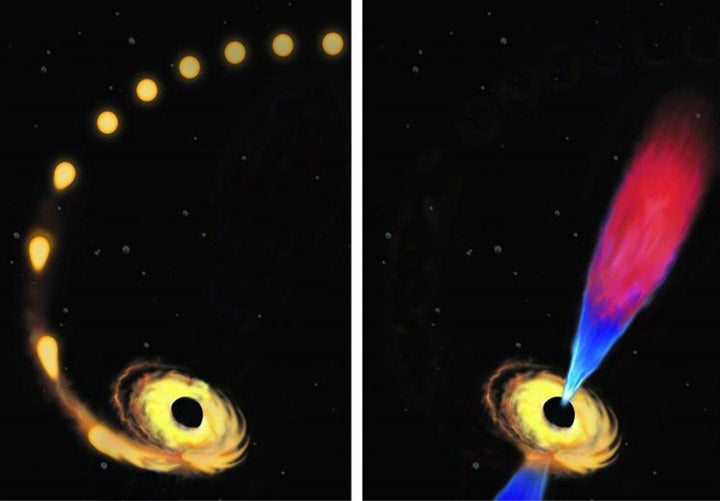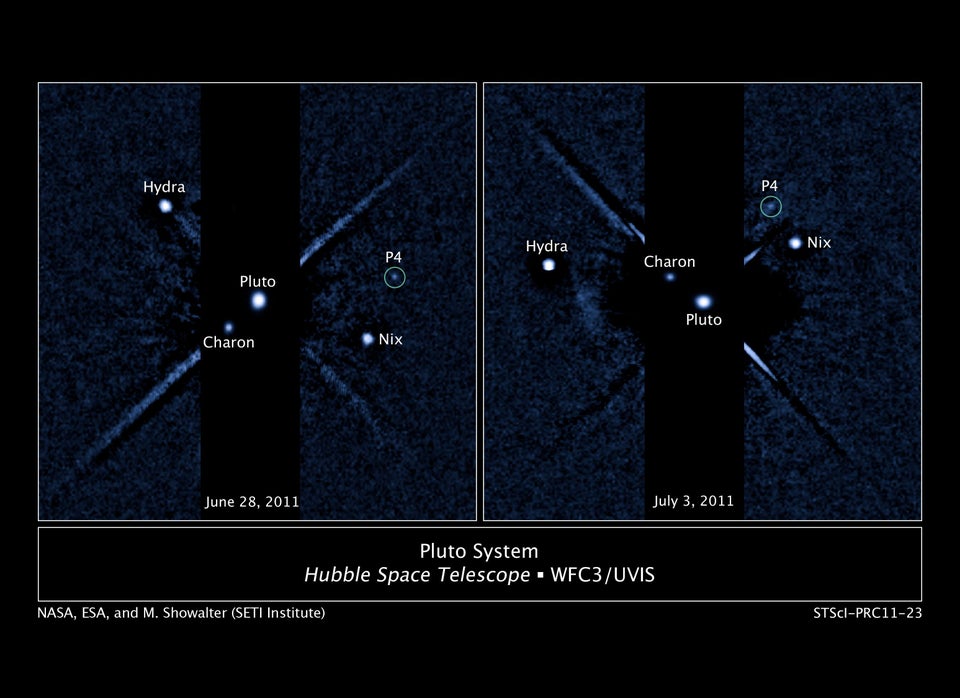This cosmic giant has no manners.
Some 300 million light years away, a supermassive black hole has swallowed a star and burped up a jet of matter at nearly the speed of light, an international team of researchers has found.
The star is about the size of our sun, but the black hole is 1 million times as massive. So it snared the stellar meal in its gravitational pull, according to Sjoert van Velzen, a Hubble fellow at Johns Hopkins University who led the research.
"A star getting swallowed by a black hole is not new, although they are still rare," he told The Huffington Post. "Only a few dozen of these unlucky stars have been observed so far. What is new about our study is that we first saw, in great detail, the star getting torn apart and then found the high-speed outflow -- aka the jet."

The researchers have observed this star since scientists in Ohio discovered it in 2014. Velzen's team continued observations when they realized that the the radio light from the star was rapidly changing and that something intriguing was going on.
With the help of NASA's swift satellite, the scientists could say with confidence that the changes came from the newly launched jet of charged particles. In other words, the black hole burped up debris left from the star's destruction.
"From our observations, it looks like jets are a common response from black holes that are that subjected to more gas than they can swallow at once," Velzen said.
However, the astrophysicists still aren't sure exactly how they work, from what they're entirely made of or how the jets are launched.
A Harvard team also observing the hungry black hole put their observations online last month.
"The Harvard team observed the same source, but with a different radio telescope --they used the Very Large Array, in New Mexico," Velzen said. "They were the first to put their results online, while we were the first to get our work published in a journal. So we both get our claim to fame."
Both teams plan to continue observations.
The research was published in the journal Science on Thursday.
Also on HuffPost:

